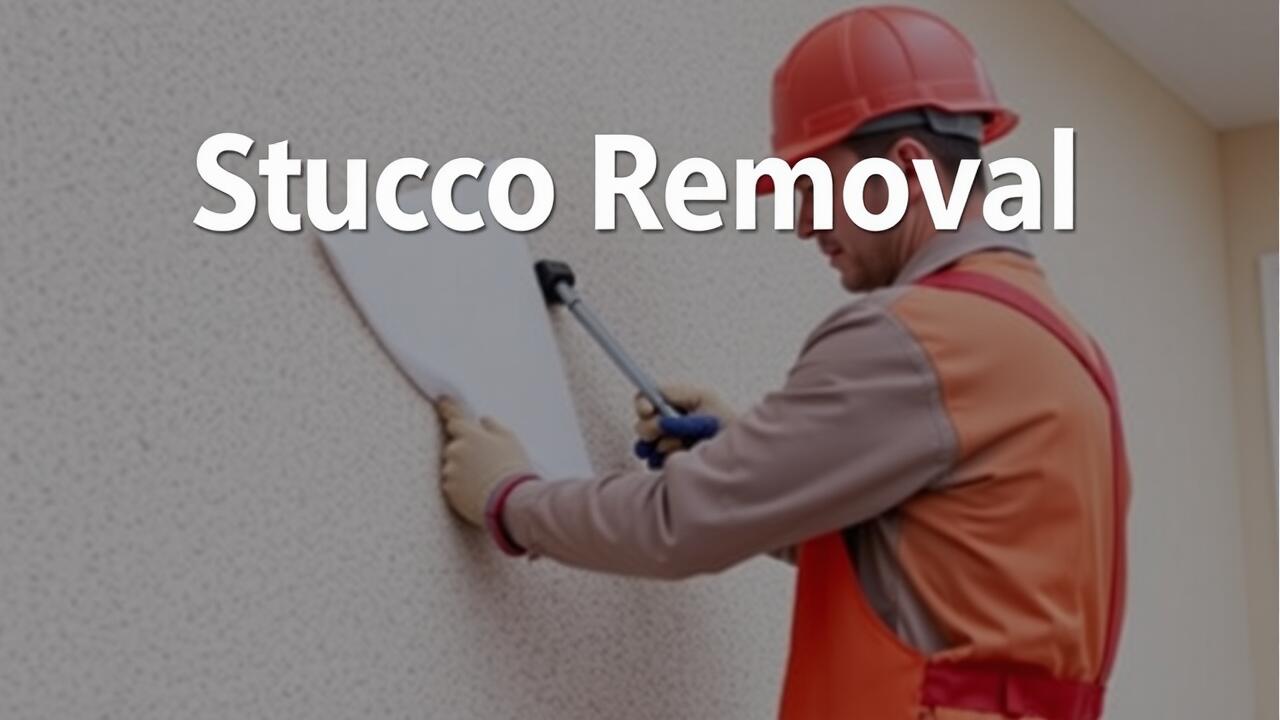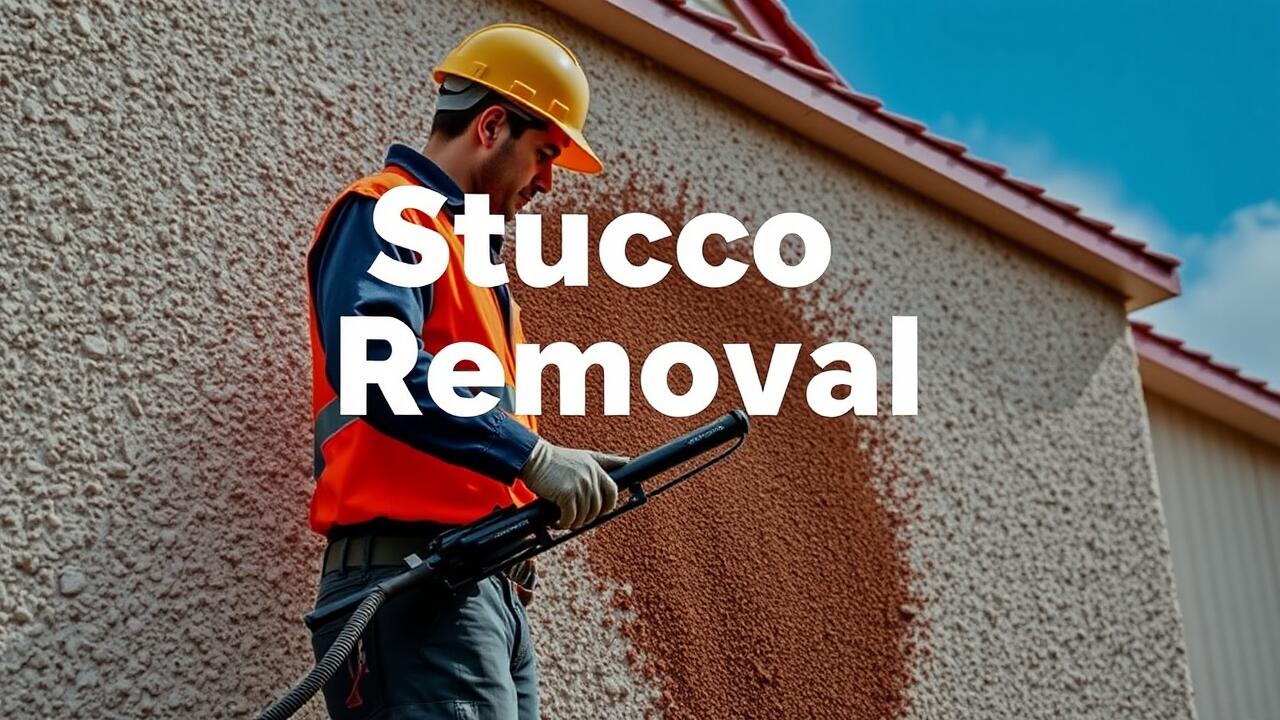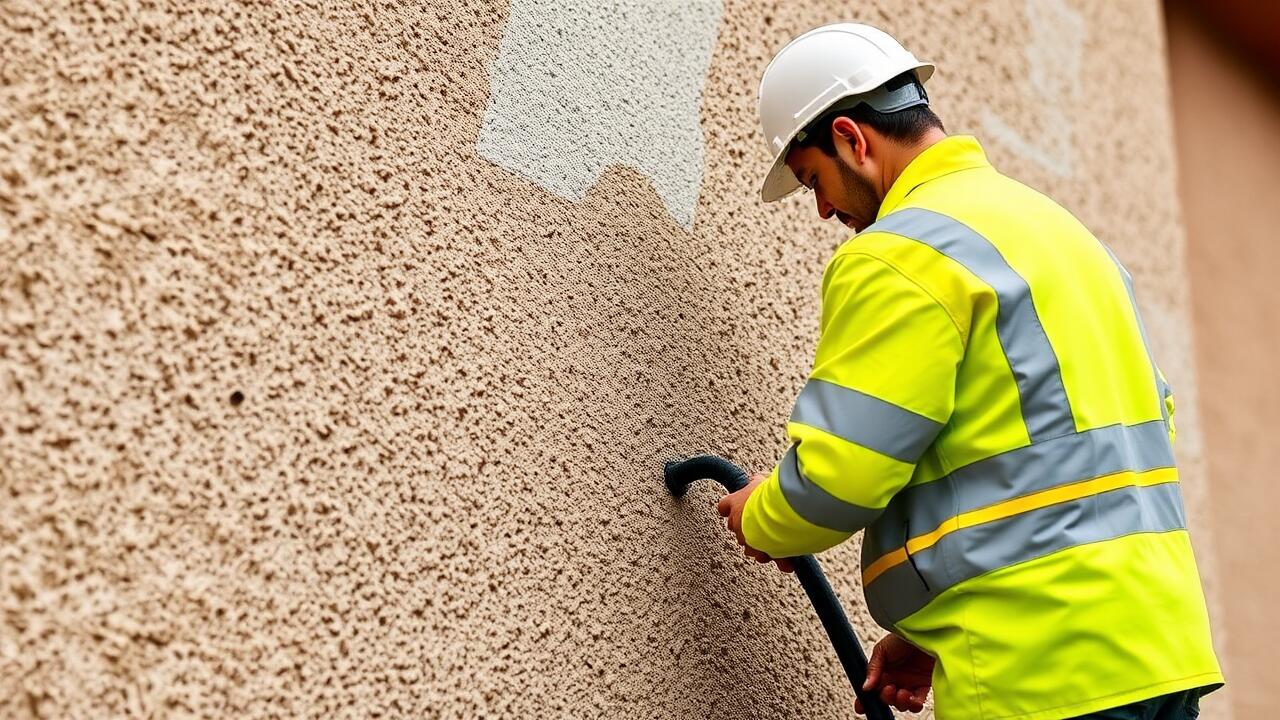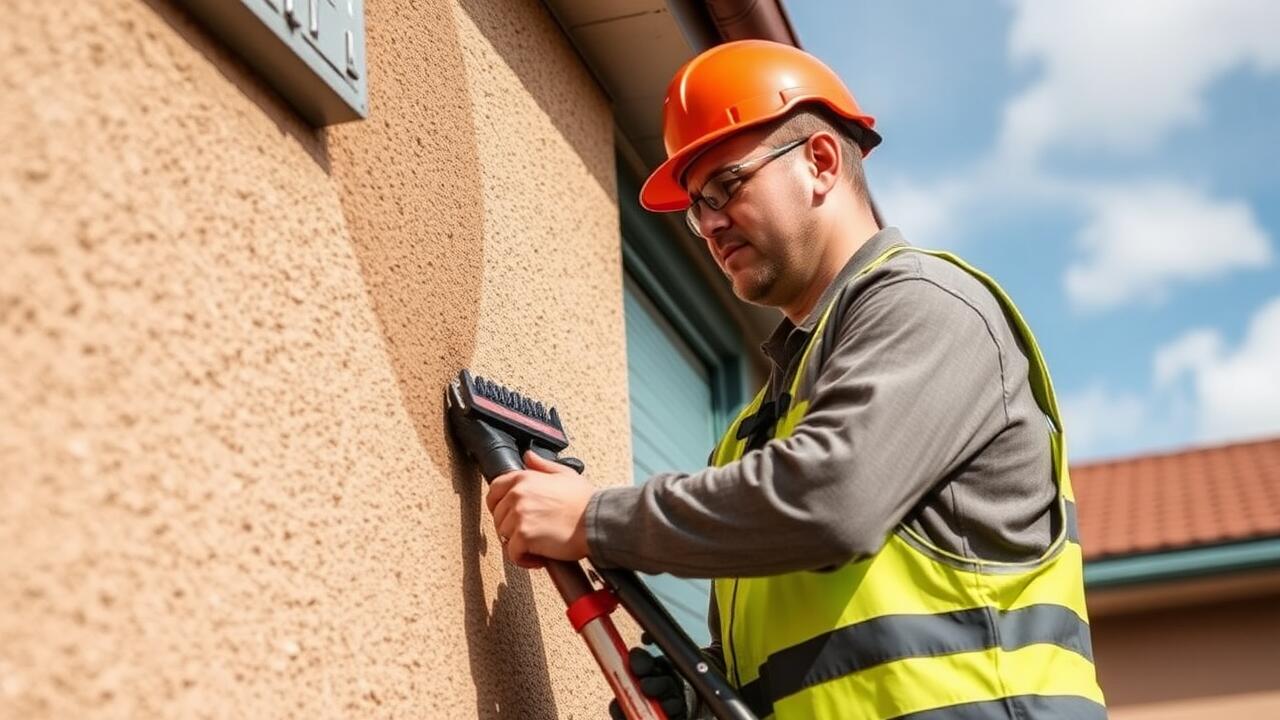
Handling Old Stucco Materials
When handling old stucco materials, safety precautions are essential. It’s important to wear protective gear including gloves, goggles, and a dust mask to guard against harmful dust and debris. Begin by assessing the condition of the stucco to identify any loose areas that may require additional care during removal. If working in an older building, be aware of the potential presence of asbestos in the stucco; testing may be necessary prior to beginning any demolition work.
Once safety measures are in place, the process of removing stucco can proceed. Using tools such as a chisel and hammer or an electric scraper helps simplify the task. For residents seeking professional help, services like Stucco Removal Boyle Heights, Los Angeles, can offer effective solutions. Proper disposal of the removed stucco materials is crucial, as they often require specific handling and removal methods to be environmentally responsible.
Disposal Methods and Environmental Considerations
When considering the disposal of old stucco materials, it's essential to follow local regulations for construction waste. Many areas have specific guidelines on how to dispose of materials like stucco, which might contain additives that are not environmentally friendly. Homeowners in Boyle Heights, Los Angeles should reach out to local waste management authorities to find designated disposal sites or recycling programs that can handle stucco efficiently. This step ensures that materials do not end up in landfills unnecessarily.
Environmental considerations extend beyond simply disposing of stucco. Reusing or recycling materials can significantly reduce waste and promote sustainability. Some contractors specialize in providing services for Stucco Removal Boyle Heights, Los Angeles, offering options to salvage elements of the stucco for reuse in new projects. Exploring these options could not only help the environment but also save homeowners on disposal costs while promoting a more eco-friendly renovation practice.
Repairing Underlying Wall Surfaces
After the stucco has been removed, inspecting the underlying wall surfaces becomes crucial. Any signs of damage, such as moisture intrusion or rot, must be addressed before applying new finishes. It is essential to ensure that the structure is sound and stable. This process may involve repairing the framing, replacing damaged insulation, or treating any mold or mildew. Thorough preparation not only enhances the durability of the new finish but also contributes to a better overall appearance.
When dealing with walls that have suffered deterioration, assessing the extent of the damage is key. Homeowners in areas like Boyle Heights, Los Angeles, may find that local regulations differ regarding repairs and improvements. Conducting a detailed evaluation allows for informed decisions about the necessary repairs. Utilizing the right materials and techniques ensures that the underlying wall can support any new finishes applied, enhancing both function and aesthetics.
Assessing Damage and Preparing for New Finishes
When assessing damage after stucco removal, it is essential to conduct a thorough inspection of the underlying surface. Look for cracks, mold, or water damage that may have developed over time. Pay special attention to areas around windows and doors where water accumulation is more likely. Any identified issues must be addressed before applying new finishes to ensure a stable and long-lasting result. Proper preparation can prevent further damage and costly repairs in the future.
Once the assessment is complete, prepare the surface for new finishes by cleaning and leveling it. Repair any damaged areas by filling in large cracks or holes with an appropriate filler. Sand the surface to ensure smoothness for the new application. For those considering services like stucco removal in Boyle Heights, Los Angeles, attention to detail during this preparation phase can significantly impact the final appearance and durability of the newly applied finish.
Alternatives to Complete Removal
For homeowners looking to enhance the appearance of their exterior walls without removing stucco entirely, several alternatives can provide effective solutions. One option is to apply a fresh coat of paint or a specialized stucco coating, which can rejuvenate the surface and add a new layer of protection. This approach allows you to retain the existing material while giving the home an updated look. Additionally, texture or stucco overlays can help modernize the appearance, providing a durable and appealing finish.
Another viable alternative is to patch existing stucco damage rather than opt for full removal. This method involves repairing any cracks or holes and then covering the patched areas with a compatible finish that blends seamlessly with the surrounding surface. By doing so, homeowners can preserve the integrity of their walls and minimize the labor and costs associated with complete stucco removal. Homeowners in regions like Boyle Heights, Los Angeles, may find that these methods not only enhance their property's aesthetics but also simplify maintenance in the long run.
Options for Patching or Covering Stucco
When considering alternatives to complete stucco removal, patching or covering existing stucco can provide a practical solution. Homeowners often choose to apply a fresh coat of paint over the stucco surface to rejuvenate its appearance. This approach is ideal for minor imperfections, as it allows for an aesthetic update without the extensive labor associated with full removal. Texture and color can be adjusted to match personal preferences, enhancing the overall look of the home while preserving the existing structure.
Another option involves using siding materials or panels to cover the stucco. This method can effectively minimize the visual impact of damaged stucco while providing additional insulation and weather protection. New materials not only offer increased durability but also create opportunities for design updates. Areas such as Boyle Heights, Los Angeles, may benefit from such practices, allowing homeowners to modernize their exteriors with less effort than complete stucco removal.
FAQS
What are the best methods for removing stucco from walls?
The best methods for removing stucco include using a chisel and hammer for small areas, an angle grinder for larger sections, or a pneumatic tool for extensive removal. Always wear protective gear and ensure proper ventilation.
How should I dispose of old stucco materials?
Old stucco materials should be disposed of according to local regulations. Many areas require that construction debris be taken to a designated landfill or recycling center. Check with your local waste management authority for specific guidelines.
What should I do if I find damage to the underlying wall surfaces?
If you discover damage to the underlying wall surfaces, assess the extent of the damage first. Repair any holes or cracks with appropriate materials before applying new finishes. Depending on the damage, you may need to consult a professional.
Are there alternatives to completely removing stucco?
Yes, there are alternatives to complete removal, such as patching damaged areas or covering stucco with new siding or other materials. These methods can save time and reduce the cost associated with full removal.
What environmental considerations should I keep in mind during stucco removal?
When removing stucco, consider the potential for dust and debris affecting air quality. Use dust control methods, such as wetting the surface before removal. Additionally, recycle materials whenever possible and dispose of hazardous materials according to regulations.


